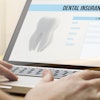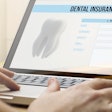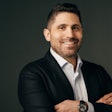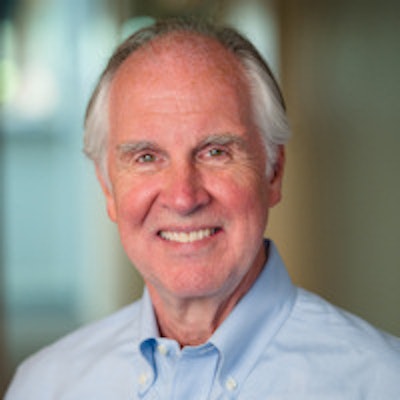
For a well-intentioned idea born more than a decade ago, establishing electronic health records (EHRs) has run into a surprising number of obstacles. This includes not only the expected issues of adoption, cost, and technical challenges, but also questions of security, HIPAA compliance, and more.
According to a spokesperson from HealthIT.gov, more than 18,000 Medicaid-eligible dentists and dental offices now use EHRs in some form, trailing only physicians and nurse practitioners in total EHR registrations. EHRs were introduced to increase productivity and reduce the use of resources, but more importantly, the goal was to give patients secure access to their own data, said Mark Hollis, CEO of MacPractice, based in Lincoln, NE.
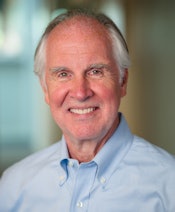 Mark Hollis, CEO of MacPractice.
Mark Hollis, CEO of MacPractice.In a series of interviews with DrBicuspid.com, Hollis spoke about the relevance of EHRs to dentists and dental practices, and he shared some of the rationale and history behind the process.
"We are in a long and challenging process of changing healthcare in the U.S.," he said. "Besides collecting statistical data nationally to improve population health and clinical outcomes, the government is striving to make it possible for all patients to access all of their clinical information securely."
Implementing an EHR does offer potential benefits for dentists, according to Hollis.
"Outside of our government's intentions, there are obvious benefits to dentists for implementing EHRs in a practice," he said. "Reducing the use of paper and eliminating charts, providing 24/7 access to clinical documentation from everywhere, streamlining patient flow and workflow in the office, potentially enhancing the ability to see and exchange patient data with other providers securely, and the capability of delivering better and safer care to patients are all potential benefits."
But it's not just about patients being able to sit down and log on to a website. It's also about dentists and other providers being able to access discrete, confidential information easily and quickly.
"We are talking about all that patient data being shareable between doctors and hospitals in a manner where all the data are collected, reconciled, and displayed in a usable manner," he said.
Where it becomes complicated, Hollis said, is that patients must be able to receive and view information from all of their healthcare providers. This requires a strong degree of universal interoperability between systems, with secure exchange of patient data and strict adherence to U.S. industry standards.
“There are obvious benefits to dentists for implementing EHRs in a practice.”
Unfortunately, even with years of planning leading up to the 2011 launch of certification for EHRs, practical interoperability remains what he calls a "pipe dream."
"We are nowhere near where we need to be in regard to the interoperability of products with each other," he said. "It's not that there is no interoperability, or that potential does not exist, but it's uncommon. In most instances, it's wishful thinking on the part of the government to talk about interoperability. Huge obstacles remain."
EHR adoption has mostly been driven by the incentive payments offered by the government.
"The first thing we ask a dentist are questions to identify if they could qualify for incentive payments," Hollis said. "We ask if the dentist sees Medicaid or otherwise-qualified patients."
Oral surgeons, dentists who treat sleep apnea, and some others who perform procedures that qualify for Medicare reimbursement can qualify for Medicare incentives for the demonstration of meaningful use of a certified EHR.
"[Those are] medical procedures and are submitted to Medicare on a medical insurance form," he said.
Also, if a dentist sees patients older than 65, they probably are creating claims for Medicare, he added.
"We explain the differences in the programs, which is not simple; we help them understand the benefits of each program," Hollis said. "We're not in the business of telling the dentist what to do."
He said he has experienced dentists and other providers declining to participate because they don't want to have their practices audited.
"I've heard a significant percentage, maybe 20%, of practices that participate in the government incentive programs will be audited," Hollis said. "2015 is promising to be the year of audits. The federal government contracts with independent auditors, and every year for which a provider receives an incentive is subject to being audited for six years."
If practitioners have done everything necessary, including using software with the necessary certification, they shouldn't really be afraid of an audit, he said. However, on the other hand, the risks and benefits of having an auditor visit the practice should be weighed.
"You can have an auditor come in for other reasons," he noted. "We like to say this is the year of audits, but this is not just the year of audits for the incentive program. It's also the year of audits looking for HIPAA violations."
HIPAA is also an area where using 2014 Edition software certified by a U.S. Office of the National Coordinator Authorized Certification Body (ONC-ACB) can help dentists meet the necessary guidelines, even if, ultimately, meeting HIPAA guidelines is up to the practitioner.
"The software ... can provide a rationale for them meeting the measures," Hollis said. "However, the dentist has to say, this is what I'm doing to protect my patient's information: I lock my door, I have an alarm system, I have screen protectors on all the computers, encryption on my office Wi-Fi, and so on. While none of those safeguards have anything to do with which software program you buy, there are critical areas where the software program does assist you, and they can list these things in their Security Risk Analysis. "
"In other words, the software program that I chose to purchase has encryption, and it meets the government standard for certification for EHRs," he said. "By doing so, it had to meet a security requirement approved by the government that ensures that whenever I quit my application, my data are automatically encrypted -- not just my backups, but my data of my application are automatically encrypted on the hard drive, and nobody can get into the data."
Essentially, he said, certified software provides an audit trail.
"Another requirement for EHR certification is that every single time anyone in your office looks at something, or changes anything in a patient's record, there is a record of that change," Hollis said. "So there is this extensive audit trail that would be in nobody's program prior to this 2014 ONC-ACB 2014 Edition certification requirement.
When a change is made in a patient's record, there's a record of the change and also everything that existed before the change.
"It's like having this huge library of snapshots of your application," he said. "You don't just have what you are working on, you also have everything as it was every time someone opened it up and looked at a record, changed an address or a phone number, added a note, or printed a report or a mailing label."
In the second part of the series, Hollis talks about meaningful use and its stages, how the EHR discussion has evolved, and what dentists can expect.
